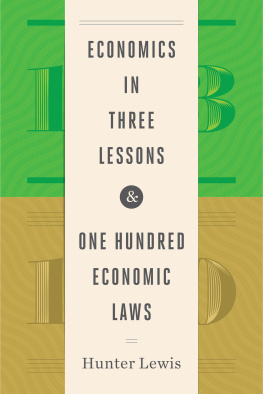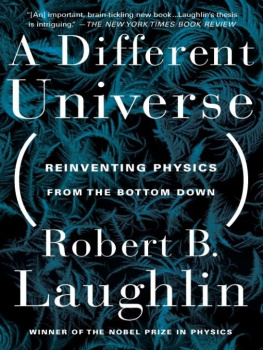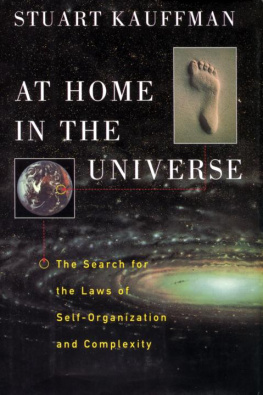The Logic of Miracles
THE LOGIC OF MIRACLES
MAKING SENSE OF RARE, REALLY RARE, AND IMPOSSIBLY RARE EVENTS
LSZL MR
TRANSLATED FROM THE HUNGARIAN BY MRTON MOLDOVN
TRANSLATION EDITED BY DAVID KRAMER
Yale
UNIVERSITY PRESS
New Haven and London
Published with assistance from the foundation established in memory of Amasa Stone Mather of the Class of 1907, Yale College.
Copyright 2018 by Lszl Mr and David Kramer. All rights reserved. This book may not be reproduced, in whole or in part, including illustrations, in any form (beyond that copying permitted by Sections 107 and 108 of the U.S. Copyright Law and except by reviewers for the public press), without written permission from the publishers.
Yale University Press books may be purchased in quantity for educational, business, or promotional use. For information, please e-mail (U.K. office).
Set in Adobe Garamond and Gotham types by Newgen North America.
Printed in the United States of America.
Library of Congress Control Number: 2017955615
ISBN 978-0-300-22415-3 (hardcover : alk. paper)
A catalogue record for this book is available from the British Library.
This paper meets the requirements of ANSI/NISO Z39.48-1992 (Permanence of Paper).
10 9 8 7 6 5 4 3 2 1
Contents
Preface
This book is about secular miracleshighly unusual eventsthat have profoundly changed the world economy, forcing us to change how we think and educate ourselves. Modern mathematics can help us understand how secular miracles work, how positive miracles have created a mechanism for continuous growthI call it the rich mans junk heapthat helps us to right ourselves in the aftermath of crises caused by negative miracles. Crisis and growth spring from a common source.
The impulse to write this book came when I read Nassim Nicholas Talebs bestseller The Black Swan. Taleb calls the world of everyday events Mediocristan and the world of unusual eventsespecially negative events, which he calls black swansExtremistan. He maintains that the models that describe Mediocristan are obsolete.
I was impressed by Talebs interesting and sometimes profound ideas but repelled at the same time. First of all, despite my advanced degree in mathematics, I found his mathematical presentation completely incomprehensible. Perhaps not coincidentally, I also found his conclusions implausible. As the author of several textbooks and books on popular science, I set out to write a book that would both challenge some of Talebs conclusions and present the mathematical concepts in a way that non-mathematically-minded readers could understand.
While I was writing the book, however, my thinking changed in two major ways. First, although the mathematics of Extremistan is useful for describing certain phenomena, I found that the old mathematics of Mediocristan is hardly obsolete. The name Mediocristan is too pejorative, so I renamed these regions Wildovia and Mildoviathe wild world and the mild world. Miracles (unusual events) occur in both places, but they obey different mathematical laws in each. My book grants equal time to the mathematics of Mildovia and to that of Wildovia.
Second, I realized that although the features of Wildoviastock market crashes, earthquakes, warsare common in our modern world, we should live our lives and organize our economies as much as possible according to the laws of Mildovia. A Wildovian economic model might be more precise, but Mildovian models serve us better. Both models, Mildovian normalcy and Wildovian turbulence, feed upon themselves. When we believe in a Mildovian model, we actually get a more Mildovian economy and society, whereas the psychological effect of believing in a Wildovian model would lead to political and economic chaos.
I believe that we are best served by a Mildovian model of human nature in which we view ourselves as generally mild-mannered and civilized and in which we see war, criminality, and rioting as extraordinary occurrences. Nevertheless, wars and other calamities occur with a frequency that can be predicted by a Wildovian model. Perhaps, despite being a Wildovian species, we are able to maintain a somewhat civilized society only because we believe we are civilized and therefore use a Mildovian model to govern our lives.
How, then, do we learn to live with the fact that crises are bound to occur sooner or later without our being constantly in crisis mode? We must prepare for crises so that when they hit, they will not fatally harm us. First of all, we have to learn how to model both Mildovias and Wildovias phenomena. We require one model for normally occurring events, some of which will be relatively uncommon, and another for extremely rare, extraordinary events. Features of these two radically different worlds are simultaneously present in our lives.
There is a certain amount of mathematics involved in this book, and if you are able to follow it, it will enrich your understanding of what I have to say. But if you were hoping to see no mathematics whatsoever and yet are eager to learn about the nature of miracles, feel free to skip the equations and concentrate on the general concepts. If a little mathematics doesnt frighten you but you dont want to delve too deeply into it, I recommend that you at least skim those more complicated sections. You will still be able to follow the flow of the book. And if you are interested in the subject in depth, I have supplied recommended reading in the endnotes.
Acknowledgments
I would like to thank the following individuals for help of various kinds in writing this book: Balzs Aczl, Kata Baka, va Bnyai, Zoltn Baracskai, Judit Bokor, Zoltn Brandt, Andrs Czellr, Pter Fbri, Zoltn Gazsi, Pter Gellri, Dniel Gnci, Mrta Hadhzy, Katalin Klmn, Balzs Karafith, Erika Kovcs, va Kovcshzy, Sndor Krti, Gbor Ligeti, Blint Madlovics, Bla Marin, Kinga Massnyi, Aposztolisz Mavromatisz, Csaba Mr, Katalin Mr, Vera Mr, Anna Pavlov, Attila Pr, Eszter Rcz, Andrs Simonovits, Tams Sipos, Krisztina Somogyi, Istvn Szamoskzi, Gbor Szsz, Jnos Szz, Zsuzsanna Szvetelszky, Zsuzsanna Takcs, Pter Ttray, Andrs Telcs, Gbor Telcs, Katalin Varga, Tams Varga, Zsadny Vcsey, and Joln Velencei.
Special thanks should go to Jzsef Bencze, who prepared camera-ready figures. I wish also to thank the copyeditor (who, like the number who lived faithfully a hidden life, prefers to remain anonymous) for a thoughtful and thorough job of copyediting, as well as the following individuals at Yale University Press: William Frucht, for his careful reading and meticulous editing of the manuscript; Karen Olson, for her assistance and support in preparing the manuscript for editing; and Ann-Marie Imbornoni for managing the editing and production of the book.
For preparing the English version, I thank Mrton Moldovn for his precise translation and David Kramer for what he has contributed: not only did he add literary flair to Mrtons translation, but he also cleaned up many of my vague or imprecise locutions and greatly increased the books accuracy, lucidity, intelligibility, and, what is most important, the degree of pleasure that I hope the reader will derive from this book.
PART ONE
Secular Miracles
The world may be one, but it has endless ways of revealing itself.
On the Existence of Miracles
The Big Bang, luckily for us, is not a reproducible event. If it were, we would all be dead.
My childhood friend Alex, who later became a successful businessman, doesnt believe in miracles. Nevertheless, one of his major ambitions, which he considered a matter of patriotism toward the small Central European country where we grew up, was to register a Hungarian enterprise on the Nasdaq stock exchange. It didnt matter whether the company dealt in medical technology, energy supply networks, or computer games. It just had to be new, original, and marketable worldwide. If he saw any possibility in a firm, he was willing to invest in it. And that was how he began to grow a little business of mine that had been quietly struggling to survive.
Next page




